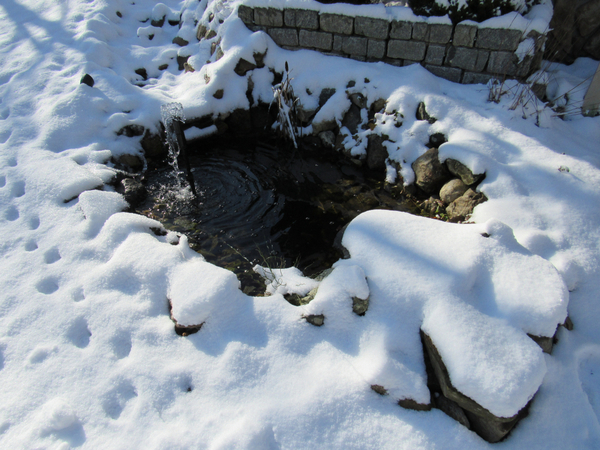
Koi pond winterization starts by not feeding your fish anymore. Then comes cleaning, trimming, adding, and moving things around.
Find out more below-
So, They Won’t Freeze?
“And it’s because our pond is deep enough? Whew, that’s a relief,” sighs Amy. Brian grunts. “But that doesn’t mean our jobs are done. I’m sure we have to prep our koi pond for winter in other ways.”
Amy nods. “I’ll bet you’re right. What do you think it involves? Actually, let’s just look it up on Google. I’ll bet we can find a pond contractor who can tell us.”
Brian picks his phone up off the counter. “True, I’ve looked through a few blogs on contractor websites when looking for the cost to install a koi pond. Let’s see what we can find.”
After searching, here is what the couple finds:
What Happens For Winter Koi Pond Maintenance
- Stop feeding koi when it hits 50 degrees Fahrenheit
- Clean out leaves and debris from skimmers and the koi pond
- Trim aquatic plants
- Add cold water bacteria
- Clean and remove the pump, filter, and skimmers if you turn your pond off
- Put an aerator or recirculating pump close to the surface
- Add a floating de-icer if necessary
Koi fish enter a half-asleep state during winter. It’s like bears hibernating. The difference is koi’s digestive system can’t stand having food in it like this. Feeding them can cause them to become sick and possibly die.
Cleaning out the pond helps out in many ways. Leaves and such will break down, turning into sludge. This makes your pond nasty and hard to clean. As these things break down they release gases too, which is why having a hole in the ice is important.
Don’t break a hole in the ice. It will scare your fish, possibly heart attack level. The hole allows for gas from your fish and any debris to escape while clean air comes in. You can safely make holes in the ice in several ways. The floating de-icer, the aerator, and leaving your waterfall on.
Trimming the aquatic plants keeps them in check. This keeps your pond looking good and helps with spring pond maintenance.
Cold water bacteria helps keep your pond cleaner for your fish.
You’ll want to move the aerator closer to the surface for sure. Its purpose is to move water around, which oxygenates it. During winter it’ll mix the warmer water near the bottom with the colder water near the top. Then your fish will be cold all winter. Moving it closer to the surface allows it to oxygenate the water without mixing the warm and cold.
